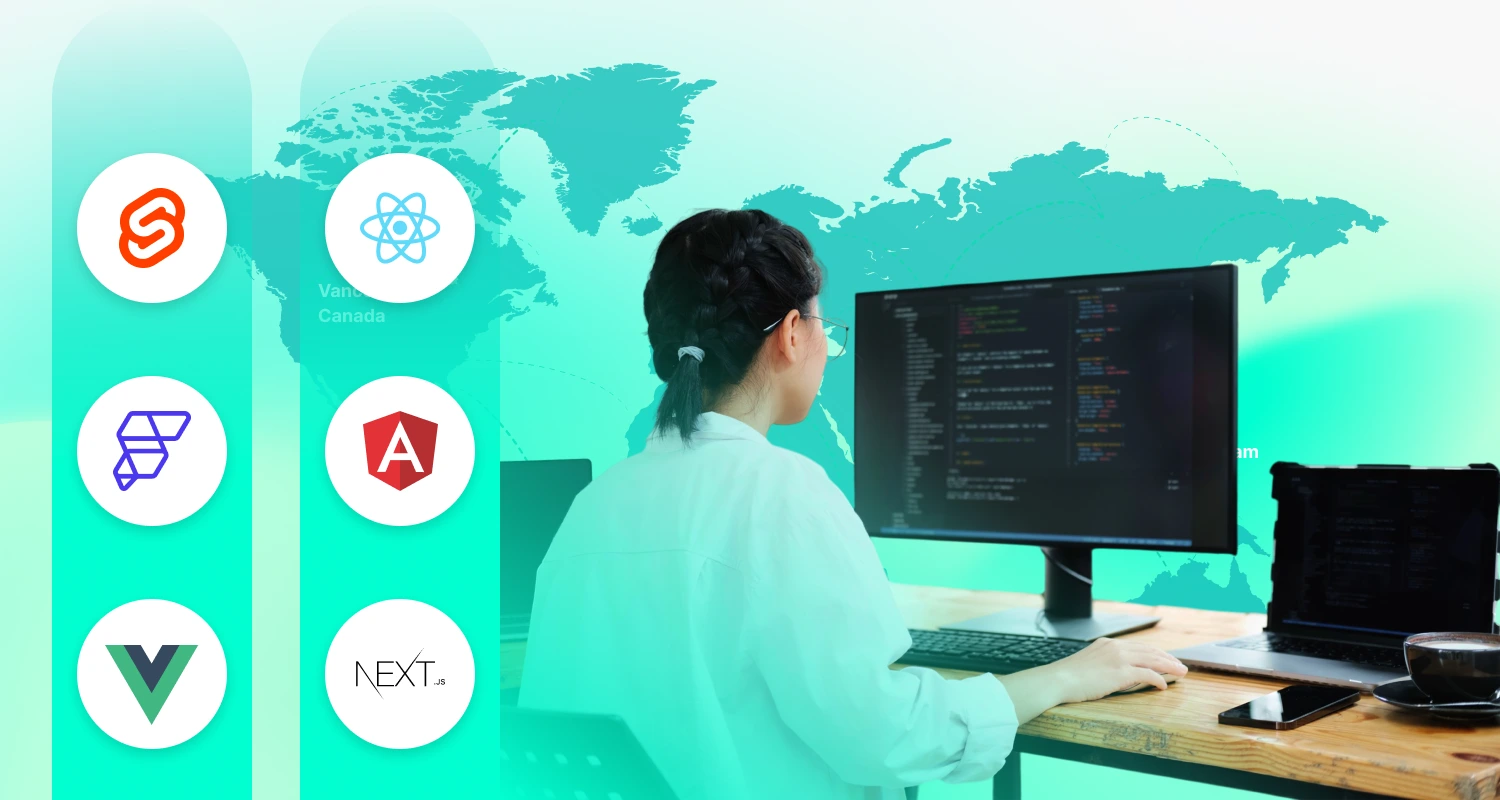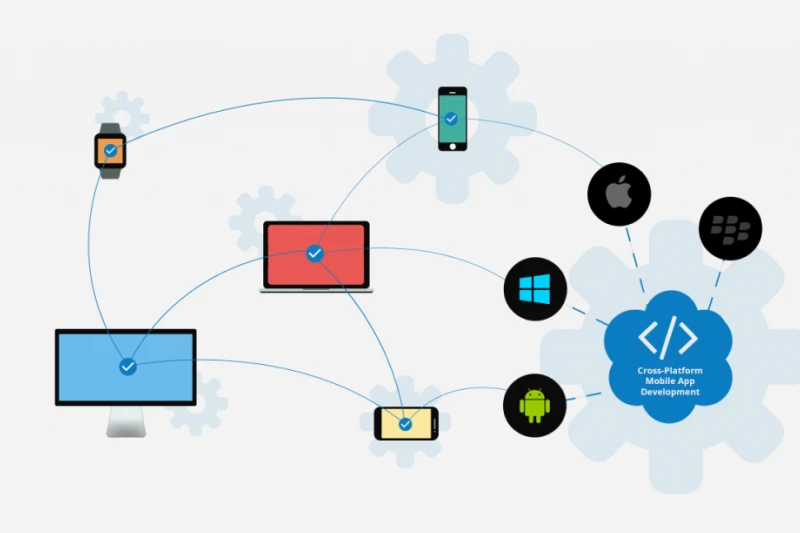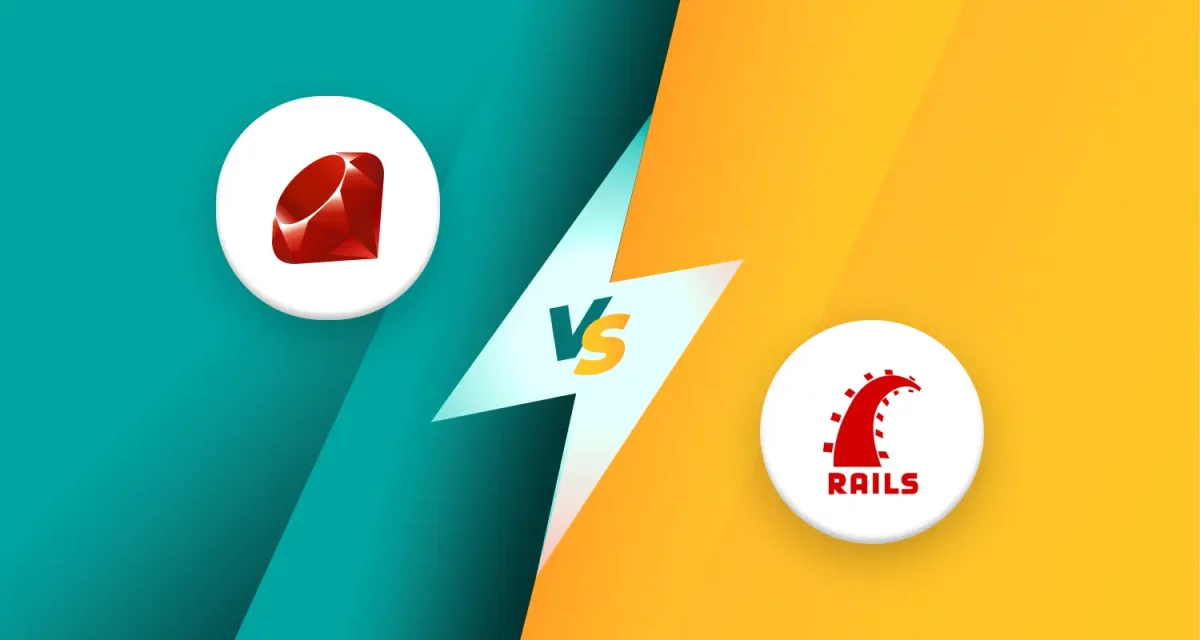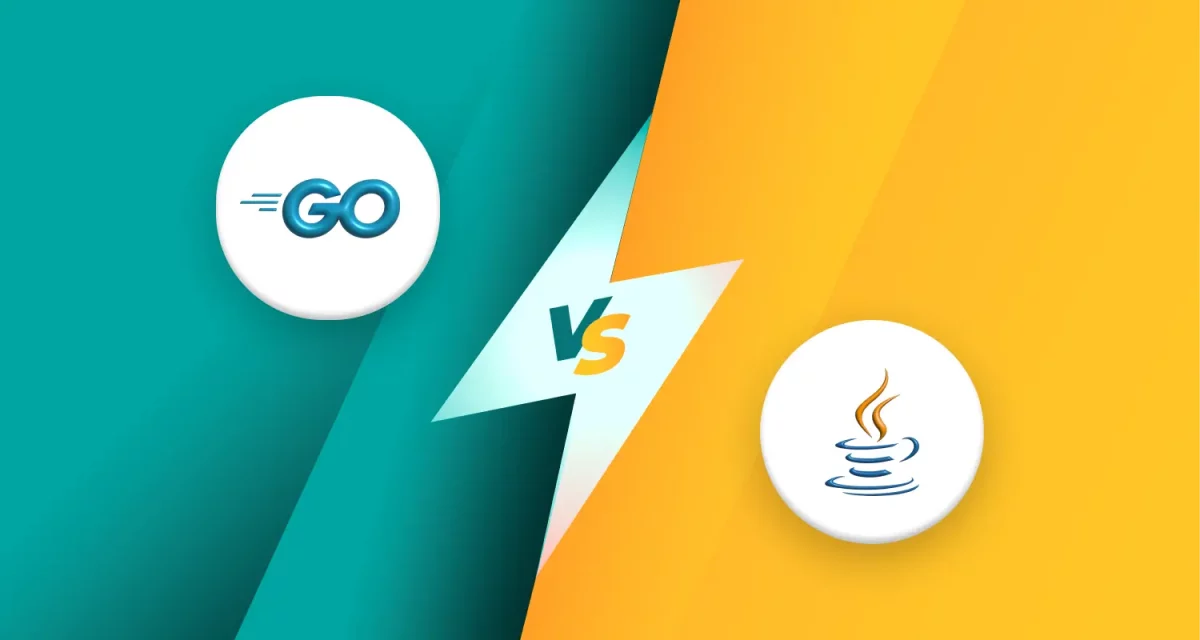
Building complex software necessitates a well-organized approach supporting growth and ongoing upkeep. Software development frameworks offer this essential structure, facilitating streamlined coding and enhanced teamwork. This article will examine the value of such frameworks, compare prominent choices for web development, and analyze the top mobile application development frameworks projected for 2025.
1. What is a software development framework?
A software development framework is a pre-established platform that provides reusable code, libraries, and tools to facilitate application development.
These frameworks simplify complex coding tasks by offering standardized architectures like MVC (Model-View-Controller) and integrating essential functionalities such as RESTful APIs, component-based development, and security measures.
2. Core elements of software development frameworks

- User interface (UI) and user experience (UX) frameworks (front-end): These frameworks are essential for crafting the visual layout and interactive elements that users directly engage with. They manage client-side operations, including handling user interactions and executing scripts within the browser.
- Server-side logic and data management frameworks (back-end): These frameworks streamline the development of server-based functionalities. They handle tasks such as processing data, managing databases, implementing user authentication, and defining the application’s core logic.
- Multiplatform application development tools (cross-platform): These tools empower developers to create applications that function across diverse environments, web browsers, mobile operating systems, and desktop platforms from a single codebase, enhancing efficiency and reach.
Read more >>> Top 12 Best Cross-Platform App Framework 2025: Which One Wins?
3. Leveraging programming frameworks: Advantages and disadvantages
When choosing a software framework, developers weigh distinct advantages against potential drawbacks. Here’s a breakdown:
3.1. Advantages
- Accelerated project timelines:
Frameworks offer pre-built components and utilities, allowing developers to bypass foundational coding tasks. This translates to quicker development cycles and faster deployment of applications.
- Enhanced code uniformity:
By enforcing structured architecture, frameworks promote consistent coding practices. This standardization simplifies code reviews, facilitates team collaboration, and reduces the likelihood of errors.
- Integrated security protocols:
Many frameworks incorporate robust security measures, such as input validation and protection against common attack vectors. This proactive approach minimizes vulnerabilities and strengthens application resilience.
- Support for application growth:
Frameworks are designed to handle increasing workloads and expanding feature sets. This inherent scalability ensures that applications adapt to evolving user demands without requiring extensive rewrites.
- Extensive knowledge resources:
Widely adopted frameworks benefit from active communities that provide comprehensive documentation, tutorials, and troubleshooting assistance. This readily available support network accelerates problem-solving and knowledge acquisition.
3.2. Disadvantages
- Initial proficiency investment:
Mastering the intricacies of a framework can require a significant time investment, particularly for developers unfamiliar with its specific paradigms and conventions.
- Potential performance trade-offs:
The abstraction layers and pre-built functionalities of frameworks may introduce a slight performance penalty compared to highly optimized, custom-built solutions. This overhead should be evaluated against the benefits of rapid development.
- Constraints on customization:
Frameworks often impose architectural constraints that limit the ability to implement highly specialized or unconventional features.
Developers must carefully assess whether a framework aligns with the project’s unique requirements.
4. Popular development frameworks in 2025

4.1. Web development frameworks
- #1. React.js (Facebook): Constructs dynamic user interfaces using reusable components in a JavaScript environment.
- #2. Angular (Google): A TypeScript-based platform for crafting scalable front-end applications with comprehensive features.
- #3. Vue.js: Offers a flexible JavaScript approach for building interactive web interfaces, emphasizing simplicity.
- #4. Remix (Shopify): Focuses on server-side rendering for optimized web performance in modern applications.
- #5. Apache Sling (Java Web Framework): Facilitates the creation of adaptable web solutions leveraging Java and content repositories.
- #6. Svelte: Compiles code into highly efficient vanilla JavaScript for rapid front-end execution.
- #7. Next.js: Enables static site generation and server-side rendering within a React ecosystem.
- #8. Ember.js: Provides a structured approach for building complex web applications with established conventions.
- #9. Backbone.js: Organizes web applications with a lightweight framework emphasizing data models.
- #10. Blazor (Microsoft): Allows web UI development using C# rather than JavaScript.
- #11. SolidJS: Delivers a reactive UI paradigm with a focus on high performance and simplicity.
- #12. Astro: Designs content-driven websites with a modern architecture that prioritizes speed.
- #13. Nuxt.js: Extends Vue.js for building universal web applications and pre-rendered static sites.
- #14. Lit: A foundation for building fast, component-based UIs using web standards.
- #15. Marko: Compiles JavaScript into efficient HTML for reactive web interfaces.
- #16. Preact: Offers a lightweight alternative to React, maintaining API compatibility for quick development.
- #17. Alpine.js: Adds interactive behavior to HTML directly within the markup.
- #18. Stimulus: Enhances HTML with JavaScript functionality in a structured, unobtrusive way.
- #19. Inferno: Provides a high-speed, React-like library for creating optimized user interfaces.
- #20. Mithril.js: Constructs single-page applications with a lightweight client-side JavaScript framework.
Want to Integrate Powerful IT Solutions into Your Business?
We provide tailored IT solutions designed to fuel your success. Let`s map out a winning strategy. Starting with a free consultation.
Contact Us4.2. Mobile app development frameworks
Here’s a look at the top programming frameworks for mobile app development:
- #1. React Native: Develops cross-platform mobile apps using JavaScript and the React paradigm.
- #2. Flutter: Builds natively compiled apps for multiple platforms with a unified UI toolkit.
- #3. SwiftUI: Creates user interfaces across Apple platforms with a declarative syntax.
- #4. Kotlin Multiplatform: Shares code between Android and iOS for efficient mobile development.
- #5. Xamarin: Utilizes C# for cross-platform mobile application development within the Microsoft ecosystem.
- #6. Ionic: Employs web technologies to build hybrid mobile applications.
- #7. NativeScript: Constructs native mobile applications using JavaScript, TypeScript, or Angular.
- #8. Framework 7: Focuses on iOS and Android design standards for comprehensive mobile app creation.
- #9. Sencha Touch: Delivers high-performance mobile apps with a JavaScript-based framework.
- #10. Corona SDK: Specializes in 2D mobile application and game development.
- #11. Compose Multiplatform: Deploys declarative UI across varied platforms via Kotlin.
- #12. MAUI (.NET Multiplatform App UI): Unifies mobile and desktop development using a single .NET codebase.
- #13. Kivy: Enables multi-touch application development using Python.
- #14. Felgo: Extends Qt for cross-platform game and application development.
- #15. Fuse: Creates fluid, native mobile user experiences with its unique UI toolkit.
- #16. Appcelerator Titanium: Translates JavaScript into native mobile application code.
- #17. Onsen UI: Builds mobile applications with HTML5 and JavaScript components.
- #18. Weex (Apache): Render’s mobile interfaces using simplified JavaScript syntax.
- #19. Capacitor: Packages web applications to run natively on diverse operating systems.
- #20. Uno Platform: Allows the creation of applications from one code base that runs on mobile, desktop, and web assembly.
Want to Integrate Powerful IT Solutions into Your Business?
We provide tailored IT solutions designed to fuel your success. Let`s map out a winning strategy. Starting with a free consultation.
Contact Us4.3. Back-end development frameworks
- #1. Django (Python): Facilitates rapid development of secure web applications with Python.
- #2. Flask (Python): A flexible microframework for building Python web applications is provided.
- #3. Express.js (Node.js): Creates RESTful APIs and web applications with a minimalist Node.js framework.
- #4. Laravel (PHP): Streamlines back-end development with an expressive PHP framework.
- #5. .NET Framework (Microsoft): Develops scalable and secure back-end solutions within the Microsoft ecosystem.
- #6. Ruby on Rails: Emphasizes convention over configuration for efficient Ruby back-end development.
- #7. FastAPI: Constructs high-performance Python APIs with modern standards.
- #8. Spring Boot: Builds production-ready Java applications with minimal configuration.
- #9. Koa.js: Enhances middleware handling in Node.js applications.
- #10. Phoenix (Elixir): Develops scalable and performant web applications with the Elixir language.
- #11. Gin (Go): Provides a high-speed HTTP web framework in Go.
- #12. Actix Web (Rust): Offers a rapid and robust web framework for Rust applications.
- #13. Play Framework (Scala/Java): Enables high-velocity web development with Java and Scala.
- #14. Dropwizard (Java): Builds operation-friendly RESTful web services with Java.
- #15. Rocket (Rust): Focuses on developer ergonomics in Rust web application development.
- #16. Micronaut (Java): Creates modular microservices and serverless applications on the JVM.
- #17. Fiber (Go): Delivers Express-like functionality with high-speed Go HTTP processing.
- #18. Sanic (Python): Optimizes speed in Python web server and framework applications.
- #19. Slim (PHP): Develops simple yet powerful web applications and APIs with a PHP microframework.
- #20. Vapor (Swift): Constructs web applications and APIs using the Swift programming language.
4.4. Cross-platform development tools

- #1. JUCE (C++ Framework): Develops audio applications and plugins with a comprehensive C++ toolkit.
- #2. Tauri (Desktop Application Framework): Builds secure and efficient desktop applications using web technologies.
- #3. Electron (GitHub): Creates cross-platform desktop applications with web development skills.
- #4. Unity (Game Development): Develops games with a versatile game engine for multiple platforms.
- #5. PhoneGap: Packages web applications for cross-platform mobile deployment.
- #6. Qt: Develops cross-platform applications with a comprehensive C++ framework.
- #7. Godot Engine: Creates games with an open-source engine and dedicated scripting.
- #8. Haxe: Develops games and applications across various platforms with a multi-target toolkit.
- #9. OpenFL: Builds interactive applications and games with a focus on cross-platform compatibility.
- #10. Avalonia: Constructs cross-platform UI applications with a .NET-based framework.
- #11. Flax Engine: Creates high-quality 3D games with an open-source C# engine.
- #12. Lumberyard (AWS): Provides a free 3D game engine for cross-platform development.
- #13. Cocos2d-x: Builds 2D mobile games with an open-source cross-platform engine.
- #14. Defold: Develops desktop, mobile, web, and console games with a free engine.
- #15. MonoGame: Creates cross-platform games with a .NET framework.
- #16. SDL (Simple DirectMedia Layer): Provides low-level access to multimedia hardware for cross-platform development.
- #17. Skia: Renders 2D graphics across various hardware and software platforms.
- #18. wxWidgets: Builds applications for multiple operating systems with a C++ library.
- #19. GTK (GIMP Toolkit): Creates graphical user interfaces with a cross-platform toolkit.
- #20. ImGui (Immediate Mode GUI): Offers a lightweight GUI library for C++ projects.
- #21. SDL2: Enhances multimedia access for cross-platform applications.
- #22. SFML (Simple and Fast Multimedia Library): Simplifies multimedia component access for game development.
- #23. OpenGL: Renders 2D and 3D graphics across multiple platforms with a standardized API.
- #24. Vulkan: Provides low-overhead 3D graphics and computing across various systems.
- #25. DirectX: Offers APIs for multimedia tasks, particularly game programming, on Microsoft platforms.
- #26. OpenCV: Implements real-time computer vision functionalities.
- #27. TensorFlow.js: Deploys machine learning models in web browsers and Node.js environments.
- #28. PyQt: Integrates Qt framework functionality into Python for cross-platform GUI development.
- #29. KivyMD: Adds Material Design widgets to Kivy for enhanced UI design.
- #30. LibGDX: Develops cross-platform games using Java.
- #31. Raylib: Provides a straightforward library for video game programming.
- #32. Nuklear: Creates minimal state GUI toolkits in ANSI C.
- #33. Dear ImGui: (Alternate) Creates lightweight GUI interfaces within C++ applications.
- #34. OpenTK: Offers .NET bindings for OpenGL, OpenCL, and OpenAL.
- #35. FLTK (Fast Light Toolkit): Constructs lightweight graphical interfaces using C++ across diverse operating systems.
- #36. CEF (Chromium Embedded Framework): Embeds a Chromium browser engine into applications for web-based UI integration.
- #37. Sciter: Integrates HTML, CSS, and scripting into desktop applications for adaptable user interfaces.
- #38. Lazarus: Facilitates rapid application development with a visual IDE using Free Pascal for cross-platform solutions.
- #39. Mono: Offers an open-source implementation of the .NET Framework, enabling development across multiple platforms.
- #40. Bevy: A data-driven game engine built in Rust that utilizes an Entity Component System architecture.
5. Comparison of popular development frameworks
With numerous frameworks available for software development, selecting the right one depends on various factors such as project requirements, scalability, performance, and community support.
|
Framework
|
Type
|
Language
|
Key Features
|
Scalability
|
Community Support
|
|
React.js
|
Frontend Web
|
JavaScript
|
Component-based, Virtual DOM, SEO-friendly
|
High
|
Large
|
|
Angular
|
Frontend Web
|
TypeScript
|
Two-way binding, Dependency Injection
|
High
|
Large
|
|
Vue.js
|
Frontend Web
|
JavaScript
|
Lightweight, Reactive data binding
|
Medium
|
Growing
|
|
Django
|
Backend Web
|
Python
|
Secure, ORM, Rapid Development
|
High
|
Large
|
|
Express.js
|
Backend Web
|
JavaScript
|
Minimalist, Middleware support
|
High
|
Large
|
|
Laravel
|
Backend Web
|
PHP
|
MVC, Built-in authentication
|
Medium
|
Large
|
|
React Native
|
Mobile
|
JavaScript
|
Cross-platform, Hot reloading
|
High
|
Large
|
|
Flutter
|
Mobile
|
Dart
|
High performance, Single codebase
|
High
|
Large
|
|
SwiftUI
|
Mobile (iOS)
|
Swift
|
Declarative UI, Native performance
|
High
|
Medium
|
|
.NET Core
|
Backend/Web
|
C#
|
Cross-platform, High performance
|
High
|
Large
|
|
Electron
|
Cross-Platform
|
JavaScript
|
Desktop apps using web tech
|
Medium
|
Large
|
|
Qt
|
Cross-Platform
|
C++
|
Native-like performance, Versatile
|
High
|
Medium
|
The choice of a development framework depends on factors like scalability, performance, and ease of use. React, Angular and Vue remain top picks for web development, while Django, Express.js, and Laravel lead backend solutions.
For mobile apps, React Native and Flutter dominate cross-platform development, with SwiftUI excelling in iOS. Versatile frameworks like .NET Core and Electron support multi-platform needs. The ideal framework aligns with project goals and developer expertise.
6. Conclusion
Selecting the proper software development framework is crucial for project success. Developers can make informed decisions by understanding the advantages and limitations of each framework. Whether choosing a front-end, back-end, or cross-platform development framework, aligning the choice with project goals and team capabilities is essential.




